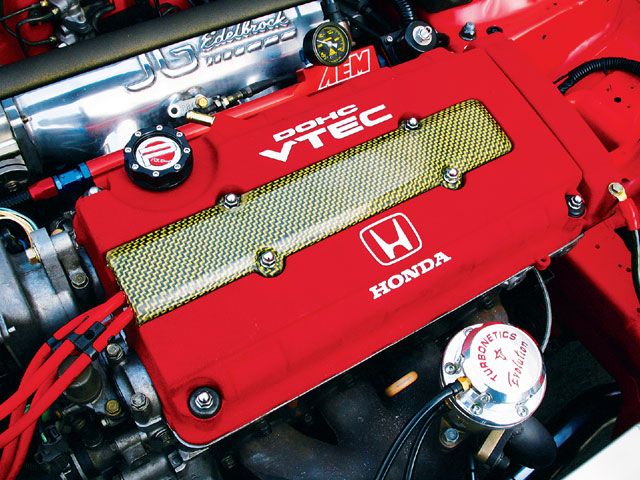Many modern engines are now equipped with variable valve timing systems to improve the performance of the engine. Variable valve timing increases an engine’s flexibility under different conditions, which can result in increased fuel economy or better performance. Many people are familiar with terms like VTEC, VVT-i, VVL and VANOS but most don’t know what they mean. Here is a quick breakdown of what some of the different terms mean, and which manufacturers use them.
- VTEC:Variable Valve Timing and Lift Electronic Control (used by Honda)
- VVT-i or VVTL-i:Variable Valve Timing and Lift with Intelligence (used by Toyota)
- MIVEC:Mitsubishi Innovative Valve timing and lift Electronic Control (used by Mitsubishi)
- VVL:Variable Valve Lift (used by Nissan)
- VANOS: Variable Onckenwellen Steuerung (German-designed system used by BMW, Ford, Ferrari and Lamborghini)
There are several other variable valve timing systems available from different manufacturers.
How Is Variable Valve Timing Accomplished?
Variable valve timing involves complex mechanical and hydraulic processes inside the vehicle’s engine. Each manufacturer’s variable valve timing system differs slightly, but most function on the same basic rules. To get a basic understanding of the principals at work we can take a look and Honda’s VTEC system, which is one of the longest standing and most common systems. Honda’s system operates using three basic steps to regulate the functioning of the vehicle’s engine.
- Low RPM Drivability.When running at lower RPM, the VTEC engine uses a camshaft with a profile designed to provide a smooth idle, good fuel economy and better low end power and torque
- Electronic monitoring and switch.The engine’s computer monitor’s the conditions under which the engine is operating, including the position of the throttle pedal and the engine’s speed or RPM, to decide when to switch to a different camshaft profile
- High RPM performance. If the engine detects a condition under which the high-performance camshaft is necessary, an electronic switch is activated and hydraulic pressure is used to switch the valve operation to a different camshaft. The high-performance camshaft provides the vehicle with considerably more power at high RPM’s. In fact, Honda drivers whose vehicles are equipped with the VTEC system can often hear and feel when the VTEC system is activated
Variable valve timing systems aren’t only used to increase performance. Several manufacturers now offer variable valve timing systems designed specifically to maximize the fuel economy of engines in vehicles that are less performance-oriented.
Other Benefits of Variable Valve Timing
- Internal exhaust gas recirculation.By allowing for more direction for internal gases, the variable valve timing system can cut down on emissions, which is critical for auto makers working to get their cars and trucks in compliance with federal or state emissions controls
- Increased torque.Variable valve timing systems can provide better torque for an engine
- Better fuel economy. with more precise handling of engine valves, some auto makers have shown that VVT can produce better fuel economy for vehicles








